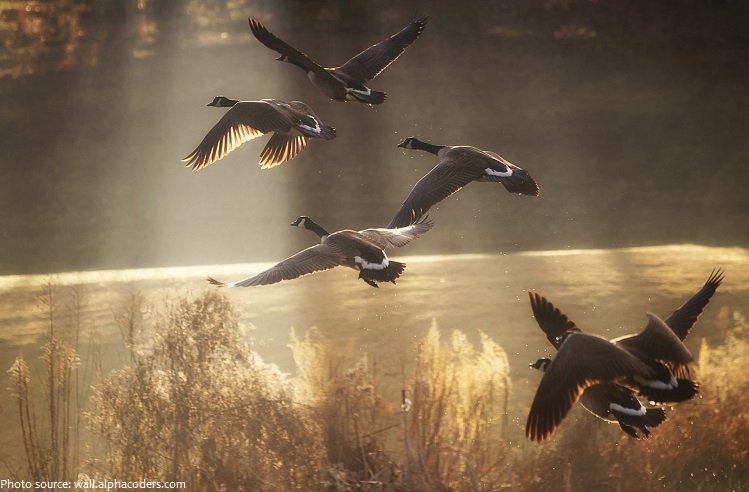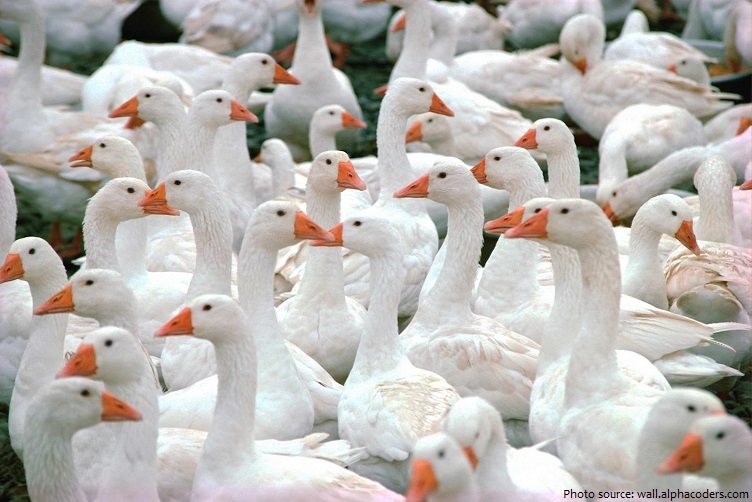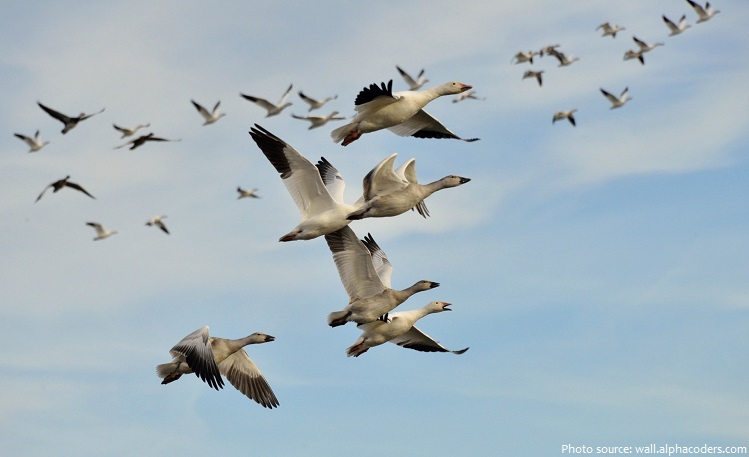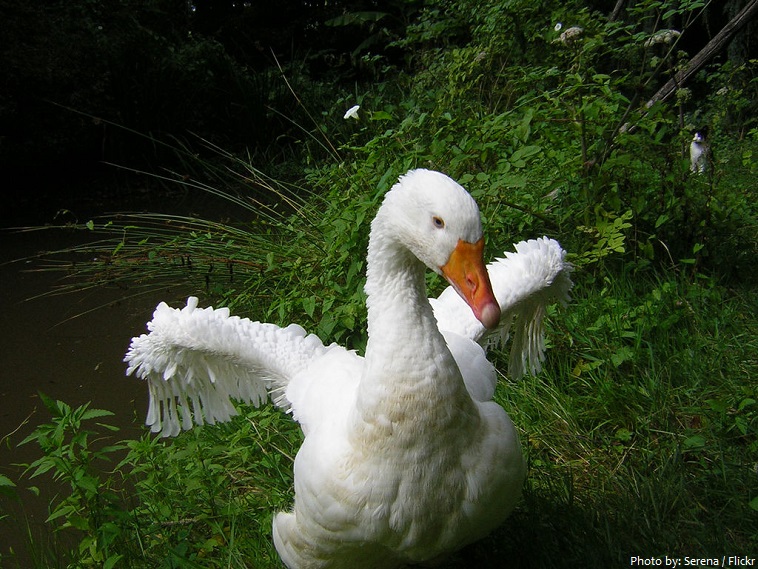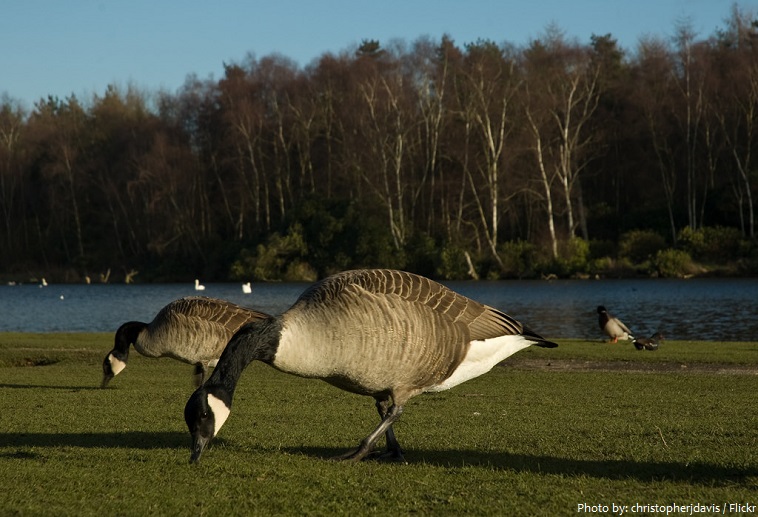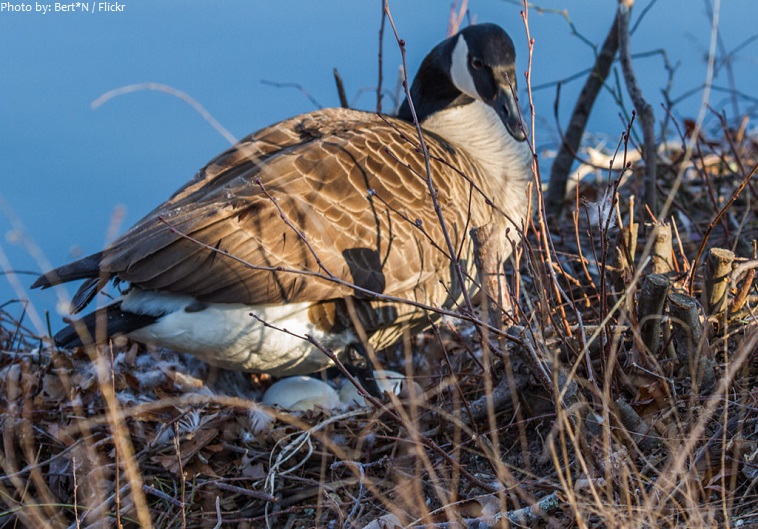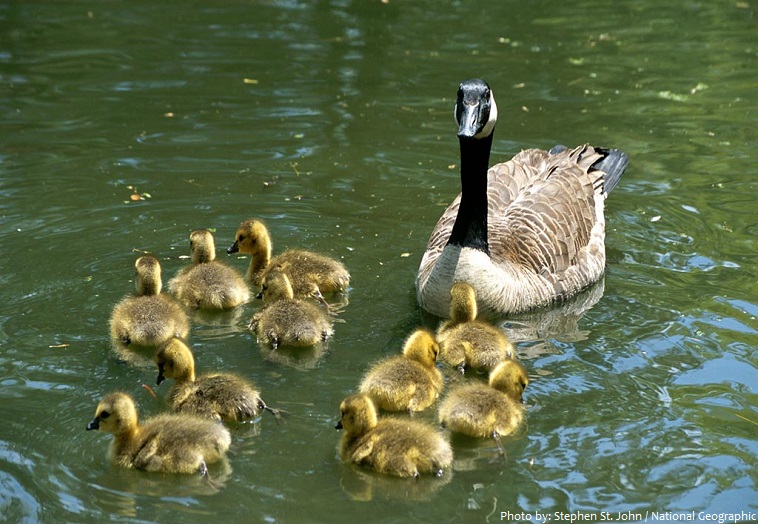Geese are birds in the family Anatidae. They are closely related to ducks and swans, which are in the same family.
There are around 30 species of goose in the world.
Geese are found all over the world.
In the wild, geese live in low marshes, river valleys, estuaries and wet pastures as well as on offshore islands, depending on the season.
Domesticated geese raised on farms forage on grassy pasture and are given yards, sometimes with sheds, as shelter.
They have a lifespan between 10 and 25 years in the wild. The average lifespan for domestic geese is around 20 to 25 years; but a number of geese individuals have been known to live for much longer.
Geese range in size from 60 to 120 centimeters (23.6 to 50 inches) in length and has a 83–185 cm (33–73 inches) wingspan. They weight from 1.5 to 12 kg (3.3 to 26.4 pounds).
A goose is often characterised by long neck, webbed feet, non-iridescent coloration and its honk.
Geese are tremendously social animals and the relationships that form in a flock are both amazing and amusing to watch.
Most of the world’s 30 or so species of geese are no strangers to migration, and some routinely accomplish amazing feats.
Migratory geese are capable of flying up to 5,000 kilometers (3,000 miles) each season.
Migratory geese fly in a V-shaped formation to minimize wind resistance and conserve energy. This formation also allows geese to remain in close proximity to one another during long journeys.
Geese fly at an average speed of about 65 kilometers (40 miles) per hour when migrating, but may increase their speed to 110 kilometers (70 miles) per hour if they catch a strong tailwind.
In Asia, Bar-headed Geese (Anser indicus) regularly migrate over the Himalayan Mountains, even over Mt. Everest at an altitude of 9,375 meters (30,750 feet) where the air is thin and the temperatures drop to -50°C (-60°F).
Geese honk while in flight to enable communication and encourage the flock to maintain a “V” formation.
Once a year, adult geese will lose flight and tail feathers, which is called molting. They are unable to fly until the new feathers have come in. The molt takes 30 to 45 days. Geese like to be near water during the molting season, to be able to escape from predators.
Geese are primarily herbivores and usually eat tender grasses and plant materials, such as roots, leaves, stems and sprouts. Geese may eat wheat and pellets, which is a common diet for farm-raised geese. Geese may eat bread, but they do not derive much nutrition from it. They also eat insects, fish, rice and corn.
Geese are very loyal. They mate for life and are very protective of their partners and offspring. If a goose’s mate or chicks become sick or injured, he or she will often refuse to leave their side, even if winter is approaching and the other geese in the group are flying south.
The mating season for geese is between March and December, during which geese return to their original birth areas and build nests. During nesting season, geese typically travel in pairs. Geese lay up to 12 eggs, and the incubation period ranges from 28 to 35 days.
Goslings are able to fly when they are about 2-3 months old. They will stay with their parents and follow them back the following year to the place where they were born. There they will form flocks with other young geese. Geese are one of the few birds in which the family does not break up at the end of the breeding season.
The natural predators of geese include wolves, eagles, bears, raccoons and foxes. Eggs and goslings are more vulnerable than adult geese and have more natural predators.
When a goose’s mate is killed, he or she will mourn in seclusion. After a partner dies, some geese spend the rest of their lives as widows or widowers, refusing to mate again.
It is generally accepted that geese were one of the first animals to be domesticated. Their domestication probably took place in Egypt about 3 000 years ago, although some research suggests that it may have been even earlier. Despite this, geese have never been exploited commercially as much as chickens or even ducks have been.
Some geese species have serrated edges to their beaks that give them a toothy appearance, but it is an adaptation to their bill called tomia and are not at all actual teeth.
Strictly speaking, the term goose is applied to the female and gander to the male. Young birds before fledging are called goslings.
A group of geese is called a “skein” in flight, a “gaggle” on the ground and a “flock” anywhere.
The offspring of a swan and a goose is called a “swoose”. The plural is either swooses or sweese.
The expression “to take a gander”, meaning to have a good look around, is a reference to the long neck of the goose, stretching to get a better look.
Geese fossils have been found from as far back as 10 to 12 million years ago.

